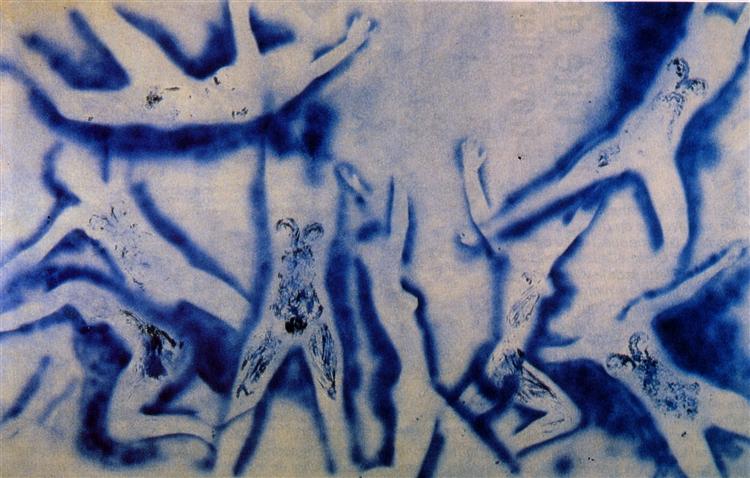1960s
Nouveau Réalisme

description
From fr. Les Nouveau Realisme.
New Realism was an art movement of the beginning of the second half of the twentieth century, the manifesto of which was signed on October 27, 1960 in Paris, headed by art critic Pierre Restany, who also coined the term. It was popular in France and Switzerland. Most of the techniques were borrowed from Dada, there is an artistic affinity with neo-Dada. Also, the new realism can be seen as a parallel to American pop art.
Types of art: Artistic form: painting, decollage, assemblage, montage, ready-made, poster, installation, sculpture. Craftsmen used torn posters, photographs, clippings from bright magazines, household and industrial waste (for example, the use of sponges by Yves Klein), converted factory items. Artists were characterized by: lack of serial production, joint work, periodic anonymity, museumification of the “product”; their works had the aesthetics of the “trash heap”.
Key ideas:
New realism = new approaches to the perception of reality.
The main idea of the movement was to embed the reality of everyday life in art, using new materials and techniques, playing with color and shape, paying tribute to their time. Thus, the realists of Nouveau brought innovations to the world of installation and sculpture.
One of the principles of the new realism says that no matter how different the masters and their works, they can belong to the same artistic group; they are in symbiosis with each other, based on the new consciousness of modern man.
As we already know, realism Nouveau sought to embody reality in art, being the opposite of abstractionism and avoiding figurativeness. However, at the same time, the direction was created from contradictions – their works looked like “abstract installations”, paintings are also difficult to distinguish from abstract ones, figurative images in paintings are not uncommon. Art critics argue that artists of the twentieth century resembled adolescents with high self-esteem and youthful maximalism, who in every possible way tried to stand out, separate from the rest, show their original uniqueness, creating new movements that did not have strong meaningful doctrines and postulates. Therefore, the short period of the existence of Nouveau’s realism is due to the artistic uselessness and, simply, the absence of new or elementary distinctive techniques.
description
David Hockney is a contemporary English and American artist, an author of famous paintings in the style of pop art with images of sparkling blue pools, attracting the viewer with their coolness in the middle of a hot afternoon. His paintings, smooth and shiny like magazine pages, mesmerize you by their simplicity, clarity and plenty of sunlight.After moving from England to California, the artist became interested in photography. The original technique of shooting with the subsequent overlay of frames allows Hockney to create unusual collages that no one had done before him - these are half-photographs, half-paintings.A constant admirer of Cubism, the artist creates works with a renewed perspective, combining several images into a single whole. His innovative approach to the collage method made the artist a recognized master of photography at the end of the 20th century.Being one of the most influential and expensive artists of our time, David Hockney is constantly inventing new techniques and experimenting with various styles. Since 2009, the artist has surprised the public with computer paintings created using an application on a regular tablet. Hockney’s work, like his bright personality, is of constant interest in society, which expects discoveries and bold challenges from the ageless artist.
1937
